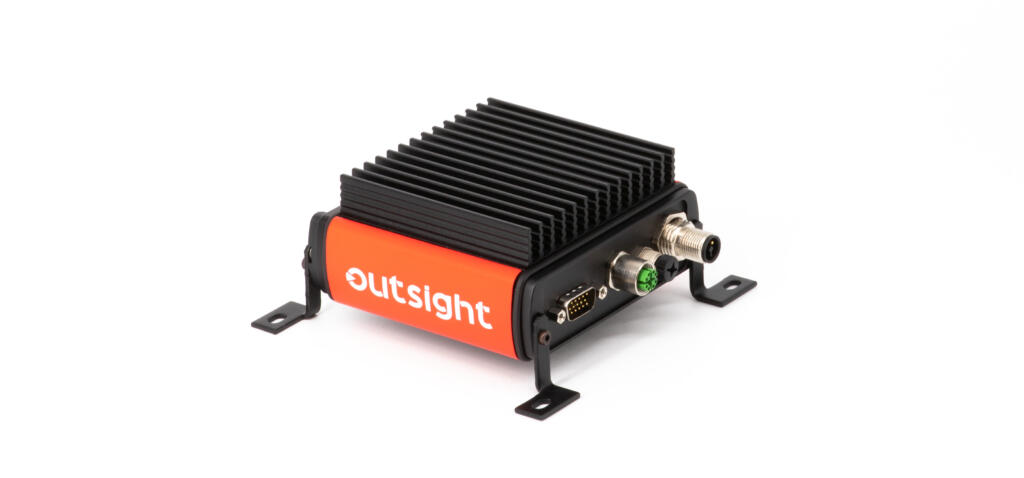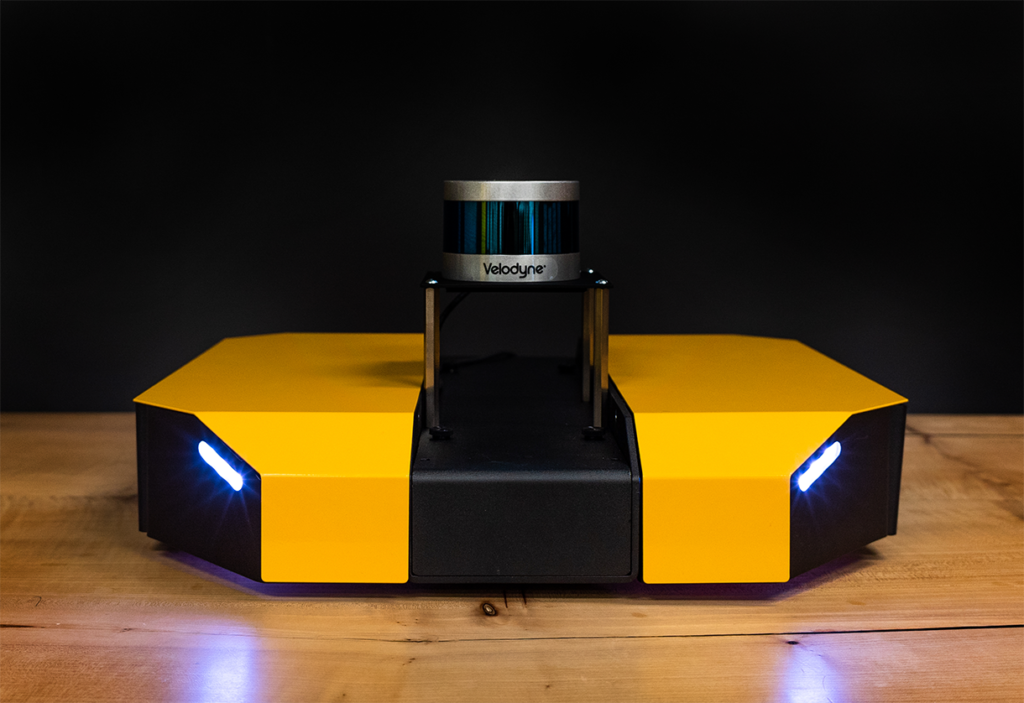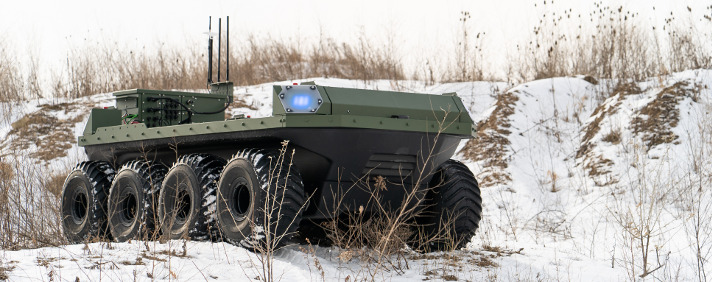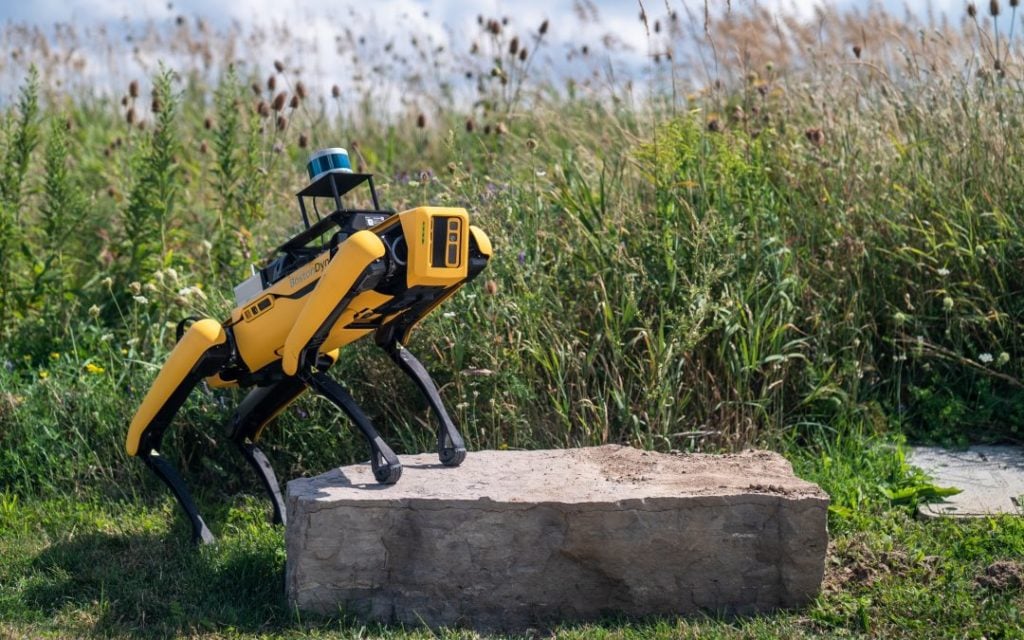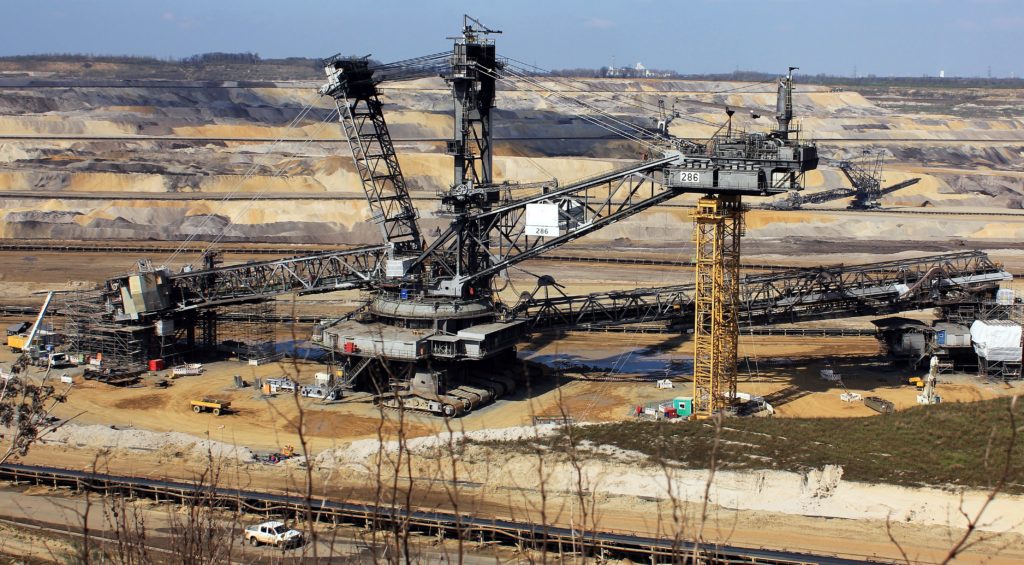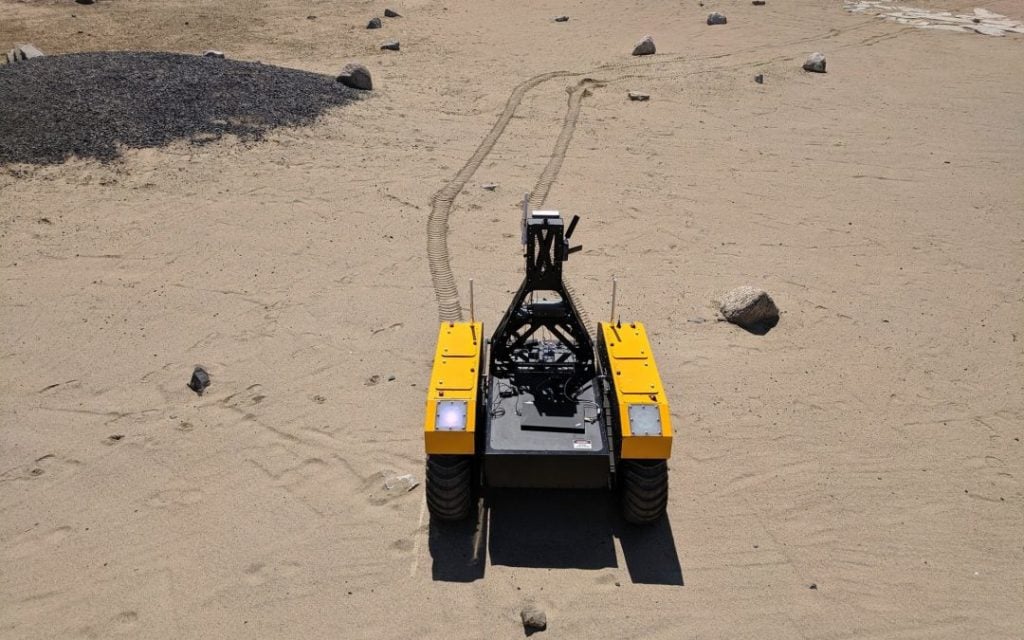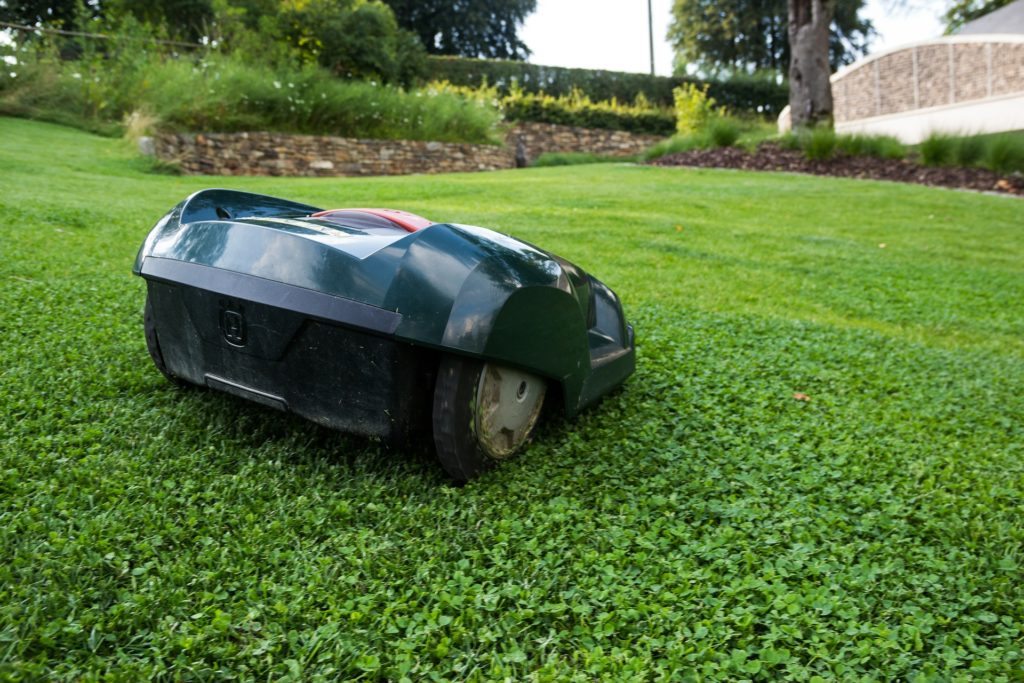100 uses of mobile robots – part two

Our dive into 100 uses of robots continues with 51 to 100 robot applications; from medicine, military and mining to exploration, education and environments of the hazardous kind – almost any task in any sphere has a robotic solution, no matter how dull, dirty or deadly!
Let’s jump back in…
51. Mapping and surveying
The ability to autonomously build maps is a highly important and active area in mobile robotics. To do so, the robot has to address mapping, localisation, and path planning all at the same time. Three-dimensional models of a robot’s environment can be generated using range imaging sensors or 3D scanners.
Indoor robotic platforms like the Clearpath Dingo provide the ideal base for autonomous navigation, mobile manipulation, and mapping—compatible with a wide range of robot sensors and accessories. The vision and mapping package includes a Dingo mobile base, podium-mounted 3D LiDAR, front-facing stereo camera, and an IMU.
(52) Robotic infrastructure inspections have the potential to transform the way we detect and prevent structural failures, using mobile inspection robots to access hard-to-reach areas and automate the process of collecting and processing data. The ATIS Cable Robot, a cable-climbing robot developed in Korea, carries out visual cable inspection and maintenance such as taping and welding.
Surveying robots, like the TinySurveyor, deliver high-precision surveying with huge potential for the (53) professional surveying and construction industry, eliminating human error in reading and writing coordinate data. They can also be used to (54) mark points and lines, completing an entire football field in just 20 minutes.
55. Medicine
Robots are poised to revolutionise the practice of medicine, and already fulfil various roles in the (56) reduction of surgical errors and less invasive procedures. The da Vinci surgical system, developed in the US, uses magnified 3D high-definition vision and controls that strap to a surgeon’s wrists and hands, making tiny, exact incisions with enhanced control.
Other robotic surgery systems, like the CyberKnife, are used to (57) treat cancer, delivering radiation therapy to tumours with sub-millimetre precision.
Clearpath’s Warthog UGV was used in the (58) fight against COVID-19, carrying a disinfection system that sprayed sodium hypochlorite on surfaces, as well as a germicidal lamp that provided disinfecting ultraviolet C light. Read the full story.
(59) Transporting supplies around the hospital is another way in which robots are improving efficiency in healthcare. Since 2014, Bristol’s Southmead Hospital has been using a fleet of Automatic Guided Vehicles to (60) deliver food to almost 1,000 patients. After completing their rounds, the robots return to their charging stations until they need to be used again.
Therapy robots used in (61) rehabilitation assist patients with physical tasks and movement during the recuperation process, such as standing up, balancing, and gait function. Robot-assisted therapy is a rapidly growing area, helping patients recover from serious conditions like strokes and spinal cord injuries.
Robots are also entering the world of (62) pharmacy, automating routine tasks like storage, dispensing, restocking and crediting. In Denmark, almost 70% of community pharmacies already use automated dispensing technology, compared to less than 10% in the UK. Pharmacy robots promise faster dispensing and fewer picking errors, improving the safety and efficacy of drug distribution.
63. Defence
Defence robots play a pivotal role as a tactical and operational tool for armed forces. As an alternative to human soldiers, they can handle a broad range of (64) combat tasks, from identifying and isolating snipers to providing backup during heavy artillery fire. They may be remotely controlled or fully autonomous and consist of different payloads, depending on the application.
UAVs, UGVs, USVs, ROVs, AUVs and others are used extensively in (65) intelligence, surveillance and reconnaissance to monitor enemy forces and send images back to the ground station, instead of sending human scouts into dangerous territory.
(66) Mine clearance is another area where army robots can be deployed, minimising the risk of unexploded ordnance and other dangerous objects. Not only that, they can also be used to (67) identify and disarm traps and IEDs in closed areas, buildings, and vehicles.
As with emergency response, robots can be deployed in (68) search and rescue missions to search, track and rescue soldiers from the battlefield with no risk to human life—even in biohazardous or radioactive environments.
Out at sea, USVs and unmanned ships will be used in place of and alongside stand-in forces for the Marines and Navy, (69) creating tactical dilemmas for adversaries as well as running ongoing intelligence, surveillance and reconnaissance. (70) Logistics is another key area where autonomous systems can play a role, carrying munitions, medical supplies, fuel, batteries and other items.
71. Hazardous environments
The use of robots in harsh and hazardous environments will transform the way we approach potentially harmful and dangerous tasks. Robots can tackle some of the world’s dirtiest, deadliest jobs, with Clearpath robots Husky UGV and Jackal UGV being used in tandem with LiDAR sensors to (72) transport water through rural areas of India and (73) autonomously map radiation environments.
Researchers from The University of Texas at Austin have developed Vaultbot, a Husky-based robot with two teleoperated arms, built to (74) improve situational awareness in uncertain environments. Rugged, customisable, and designed to deal with harsh outdoor environments, Husky is the ideal mobile solution for (75) tackling real-world terrain, forming the basis for numerous research papers.
Elsewhere, a dedicated team from Northern Robotics Laboratory in Quebec is creating a robust mobile robot that can quickly adapt to a variety of real-life weather and terrain conditions—specifically snow, or SNOW (Self-driving Navigation Optimized for Winter). The project aims to innovate current technology to improve (76) autonomous driving in winter conditions that are often rendered slippery and unstable.
(77) Radiation detection and environmental monitoring are made all the easier with nimble, four-legged robots like Spot from Boston Dynamics. Paired with the Clearpath ROS package, Spot is capable of traversing rough, unstructured terrain and can be fully tailored by integrating with IMUs, additional cameras, radar, LiDAR, and manipulators.
Robotic systems also have a part to play in (78) nuclear decommissioning, handling and sorting of waste products to reduce the exposure of personnel to ionising radiation. The KUKA robots used in nuclear decommissioning are already available on the market and can be operated in manual mode, automated mode, or a combination of the two.
Fire-fighters face serious risks on the job, from burns and heat exhaustion to smoke inhalation and crush injuries. Robotic fire-fighting systems could transform fire incident response, (79) detecting, locating, and suppressing fires, as well as travelling into areas unsafe for people, like wildfires.
When the Notre-Dame Cathedral caught fire in April 2019, the Paris Fire Brigade used Colossus, a heat- and water-resistant remote-controlled robot retrofitted with a massive hose, to help extinguish the blaze and clear away debris. Meanwhile in Los Angeles, the Thermite RS3—America’s first robotic firefighting vehicle—put out a major fire in the fashion district before being formally introduced at a news conference.
In addition, it won’t be long before autonomous roving robots arrive at our local sewers. Sewer robots with state-of-the-art cameras can reduce the cost of (80) sewer inspection, maintenance, and repairs: removing obstructions, cutting protruding taps, and performing UV patching and spot repair.
Enormous fatbergs—rock-like masses of non-biodegradable solids like nappies and wet wipes bound by congealed fat, oil and grease, like this 40-tonne monster found in London—are costly and labour-intensive to remove. But armies of sewer-scrubbing robots are fighting back, endowed with ultra-high pressure water jets and controlled manually from afar by human operators.
81. Mining
Robots are replacing humans in the world’s mines, bringing a new measure of safety and boosting the efficiency with which we obtain ore. From (82) exploring flooded sites to discover rare minerals, to (83) drilling ore faster via automated drill rigs, the mining robots of the future will not only save time and money but enable the exploration of new landscapes.
Other applications of robotics in mining include, but are not limited to, (84) robotic dozing, (85) excavation and haulage, robotic mapping and surveying, and (86) explosives handling.
87. Security and surveillance
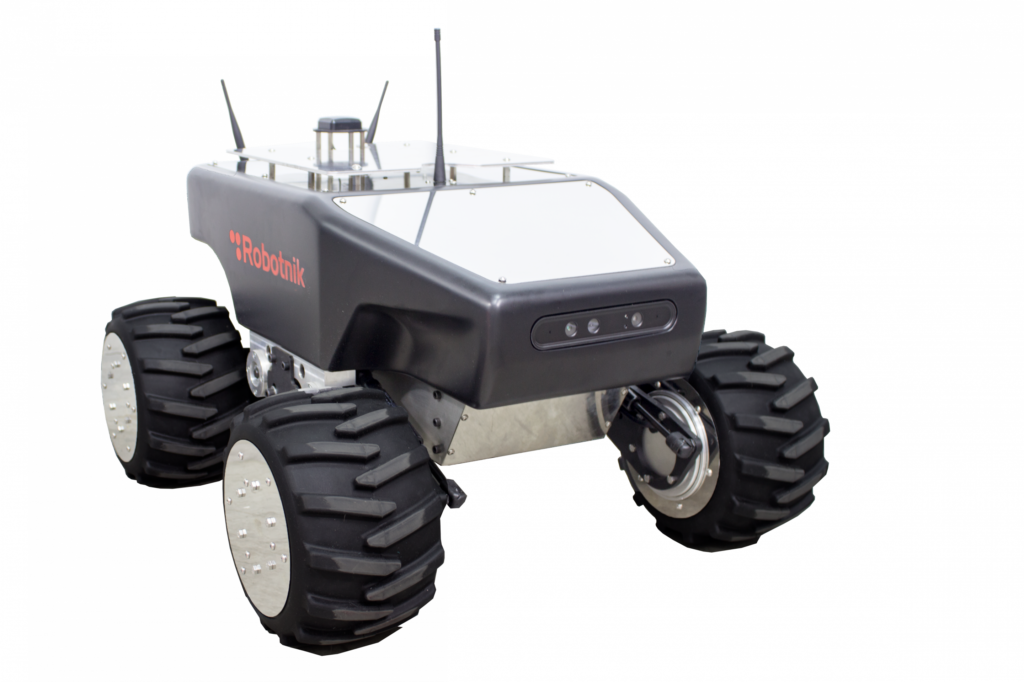
Mobile robots are now widely used in various security and surveillance applications. Remotely controlled to capture images and video, from facial scans to license plates, security robots collect far more data than humans ever could.
American security camera company Knightscope has developed an outdoor autonomous security robot, K5, which runs 24/7 (88) patrolling large public spaces such as parks, shopping malls, hospitals, and airports. K5 enables remote monitoring from anywhere, providing 360° HD video streaming, people detection, license plate recognition, and a two-way intercom.
Deployed by the Huntington Park Police Department, the data analysis showed a 46% reduction in crime reports when the Knightscope K5 ASR was in operation.
Unmanned surveillance systems can also be used for (89) perimeter control, equipped with panoramic cameras and built-in Wi-Fi that transmits a live feed back to the base station. Dogged and consistent, robots may not be able to run down criminals (yet), but they do offer a watchful presence and a deterrent against crime.
90. Space exploration
Robots have been used in space since the Soviet Union launched Sputnik 1, the first artificial Earth satellite, in 1957. Robotic spacecraft are especially useful in space exploration where distances are too long and environments too hostile to send humans. UGVs, like those used in NASA’s Mars Exploration Rover project, allowed scientists to (91) explore the surface and geology of our neighbouring planet, giving clues to past water activity.
See also: Warthog UGV Expedites Mission to Mars
Robotic technology has the potential to aid missions, facilitate exploration, and maybe even enable us to relocate to other planets. NASA’s Shapeshifter concept, a collection of mini robots that can form one machine or act independently, could be used to explore Titan, Saturn’s moon, going where no robot has gone before. The concept includes 12 robots that can fly or swim, (92) exploring caves and oceans, as well as sampling and measuring the composition of its surface.
Space is filled with thousands of satellites, but what if something starts to go wrong? Enter the space mechanics. OSAM-1 is a robotic spacecraft equipped with the tools, technologies and techniques needed to (93) extend satellites’ lifespans—even if they were not designed to be serviced on orbit. The spacecraft could even help (94) mitigate orbital debris: pieces of space ‘junk’ from the various objects humans have been launching into space for more than 60 years.
95. Personal use
Personal robots are those designed for individual use, in contrast to industrial robots. Personal service robots, such as (96) vacuum cleaning and lawn-mowing robots, are already commercially available.
The Roomba, from iRobot, is an automated vacuum cleaning robot first released in 2002. Its latest releases are Wi-Fi connected and designed to adapt to your routine. Meanwhile, robotic lawn mowers like the Stihl iMow RMI 422 P will mow, charge and adapt their schedules by themselves, automatically determining the best times to mow for an optimum result.
Robots can be used in (97) training and education to change the way students learn. They can be used to bring students into the classroom that otherwise might not be able to attend, as was the case with Devon Carrow-Sperduti, a boy with deadly allergies who sent a robot to school in his place. Robotic simulators can also be used to provide true-to-life experiences without risk, such as drivers’ education courses or disaster training for emergency response.
Robots may have a positive role to play in the future of (98) elderly care. Using medical robots will vastly reduce costs, picking up the slack by fetching food and water, providing entertainment, and offering mobility support.
Pet-style robots can help (99) mitigate the effects of sundowners syndrome—agitation or distress in the evenings experienced by dementia patients. Researchers discovered that interacting with a seal-shaped therapy robot called PARO had a calming effect on 60 percent of residents. PARO has five kinds of sensors: tactile, light, audition, temperature, and posture sensors, with which it can perceive people and its environment.
And finally, we have (100) home assistants. The era of robot assistants that learn our habits, preferences, likes and dislikes is finally here. Emotech’s Olly is said to be the first robot with an evolving personality—in other words, the exact premise of the movie Her. Robotic personal assistants can serve a variety of purposes, from home surveillance to help with day-to-day household tasks.

